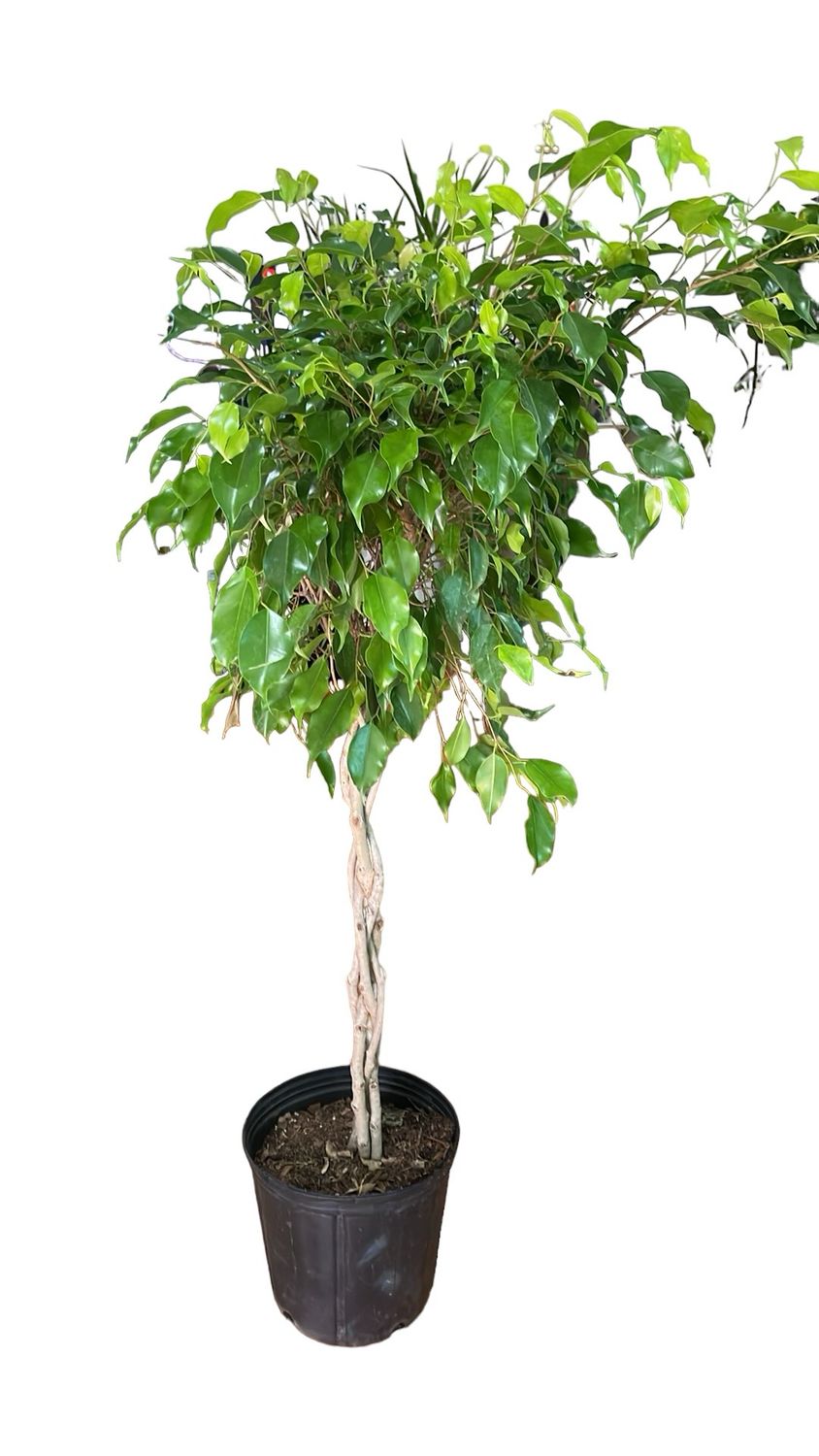Ficus Benjamina
Light
Find a spot that receives lots of bright indirect light for your ficus. All plants need light, but ficus plants need lots of it. They require indirect sunlight for at least 6 hours daily! Make sure to routinely rotate this plant so each side receives consistent sunlight. This will keep the ficus growing upright and prevent it from leaning or developing new growth just on one side.
Water
Let the soil almost completely dry out between watering a ficus, but try to keep the soil consistently damp if the plant is actively growing. During the colder months, you can cut back on the water and let the top few inches of the soil completely dry out before watering. Keep an eye on the leaves as a guide to determine if the plant needs water or not. Yellowing usually indicates too much or not enough water, so if you see leaves start to turn yellow, then check the soil to identify the issue.
Temperature
Feel free to bring your Fiddle Leaf Fig, Ficus benjamina, or Rubber Tree outside for the warmer months, but make sure to bring your ficus back inside well before the temperature turns chilly and keep it in the shade to avoid the intense sun from burning the leaves! Expect some leaf loss when you move your ficus to a new location! This is a plant that originates from tropical climates, so ficus houseplants like to be warm and really prefer temperatures above 60°F. Avoid placing your ficus near any vents, drafty windows, or exterior doors, particularly during the colder months.
Humidity
Since ficus is native to more humid climates, they need some extra dampness in the air to thrive. High humidity is necessary. Average and low humidity are absolute deal-breakers and a ficus simply cannot thrive in an environment with average or low humidity. That's not to say you cannot still enjoy the stunning beauty of a ficus if you live in a dry climate, but you'll need to bring in a humidifier or place your ficus on a pebble tray filled with water in order to create the ideal conditions for this houseplant.

